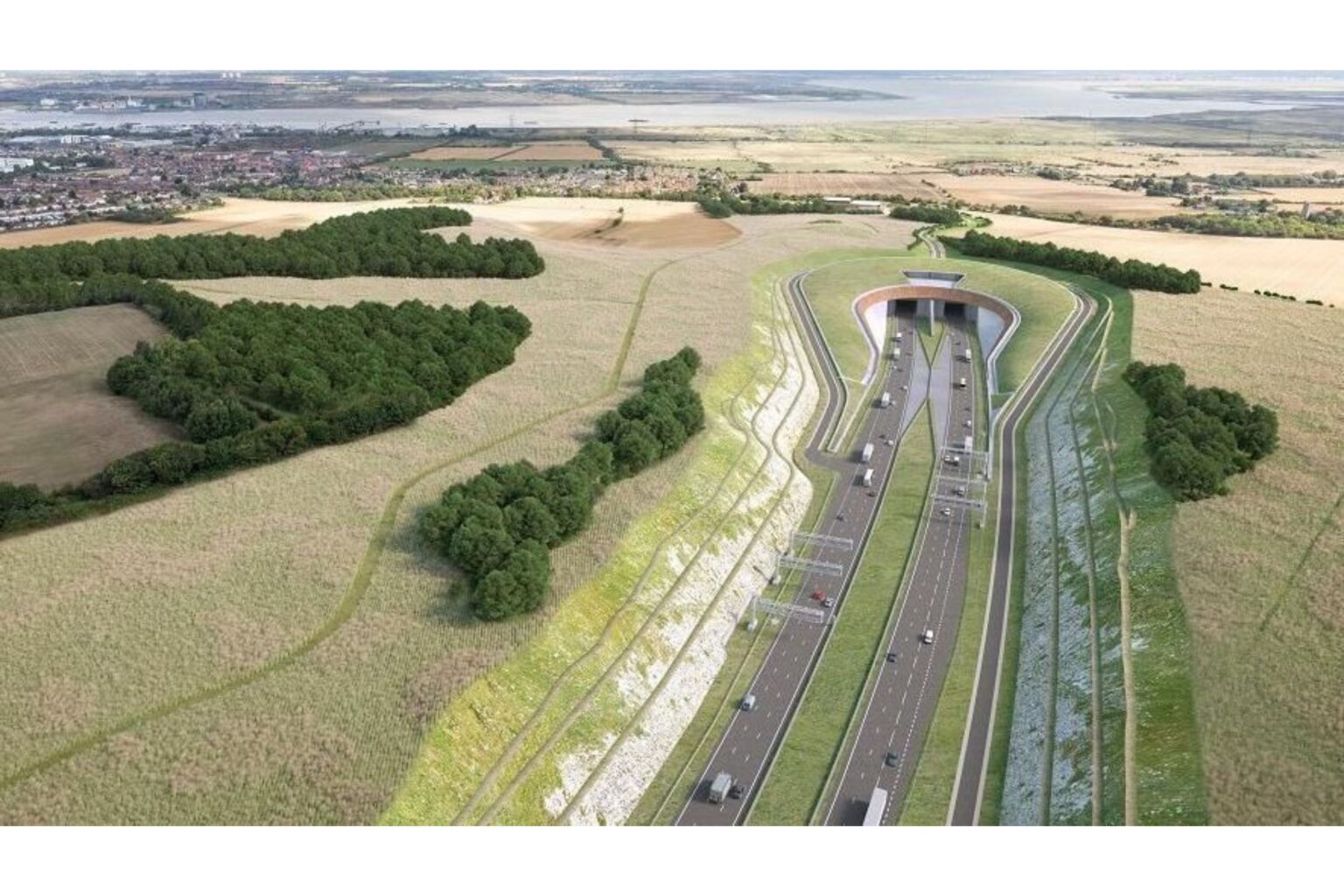Construction enabling works for the Lower Thames Crossing, set to become the largest tunnel in Europe, has been scheduled to begin in late 2025.
The 2.6-mile tunnel beneath the River Thames, greenlit by National Highways after years of delay, carries an estimated budget of £9-10 billion (approx. $12-$14 billion USD) and aims for road opening in 2032.
Newsweek contacted the Bouygues-Murphy joint venture managing the construction of the tunnel for more information on the process via email.
Why It Matters
The Lower Thames Crossing is the UK’s most ambitious road tunneling plan in decades and would dramatically expand connectivity between Kent and Essex. Its planned three-lane highway tunnel, measuring 53 feet in diameter, would be the widest in Europe. The project responds to chronic congestion at the Dartford Crossing, which currently serves as the only road tunnel across the Thames east of London.
What to Know
The development consent order for the Lower Thames Crossing was granted on March 25, 2025, following years of procedural delays.
The preliminary phase of construction includes substantial soil treatment and complex ground preparation at the north portal, where construction of the launch structure for the tunnel boring machine (TBM) is intended to begin in autumn 2026. The TBM launch is planned for spring 2028, targeting project completion and road opening by 2032.
The central tunnel’s three-lane design is notable for a unique underdeck systems arrangement. The tunnel will traverse multiple difficult subsoil layers: a surface of historical and active landfill materials, including spoil from London tunneling projects and decades-old power station fly ash, a thick layer of alluvium composed of silts, clays, and peat, and, finally, highly variable chalk.
Alan Price, technical director of the Bouygues-Murphy joint venture, described the area as “probably the worst geology anyone can find in England, let alone South England.”
The tunnel boring machine will initially need to pass through approximately 300 meters of these unconsolidated and contaminated deposits before reaching chalk suitable for efficient tunneling.
What People Are Saying
Alan Price, technical director, Bouygues Murphy JV, at the Ground Engineering Piling and Foundations conference, April 2025: “Now we have a project, and it’s just a case of how fast we can hit the accelerator, really.
“The ground is so soft in the alluvium and the tunnel rings are so big, it wouldn’t actually hold up the ovalisation we got on the rings. It’s just not good enough. So, we have a massive campaign of cutter soil mixing before we can start tunnelling.
“We would love to have launched our tunnelling machine in the nice dry chalk [on the south side] above the water table, but power supply wasn’t actually sufficient in north Kent to drive the tunnelling machine.”
What Happens Next
Pending final consent, enabling works at the Lower Thames Crossing will start in late 2025. Major construction on the TBM launch shaft and other critical infrastructure is slated for autumn 2026, with tunnel boring to commence in spring 2028. The project aims to open the new highway crossing by 2032.
Read the full article here

